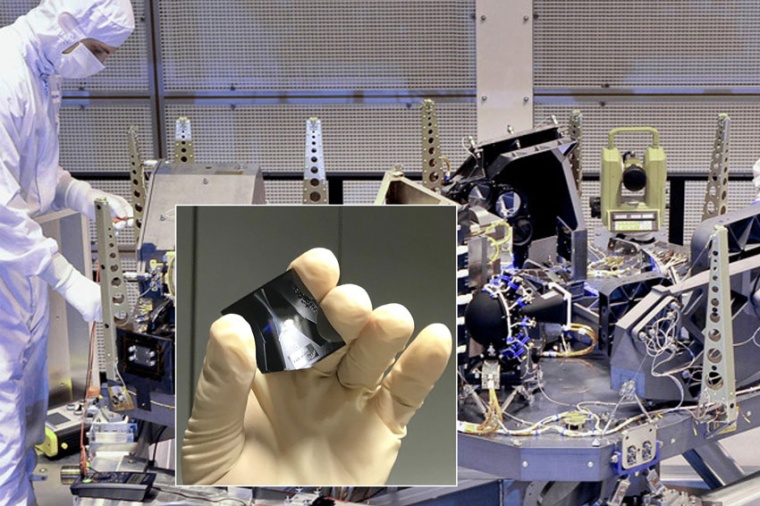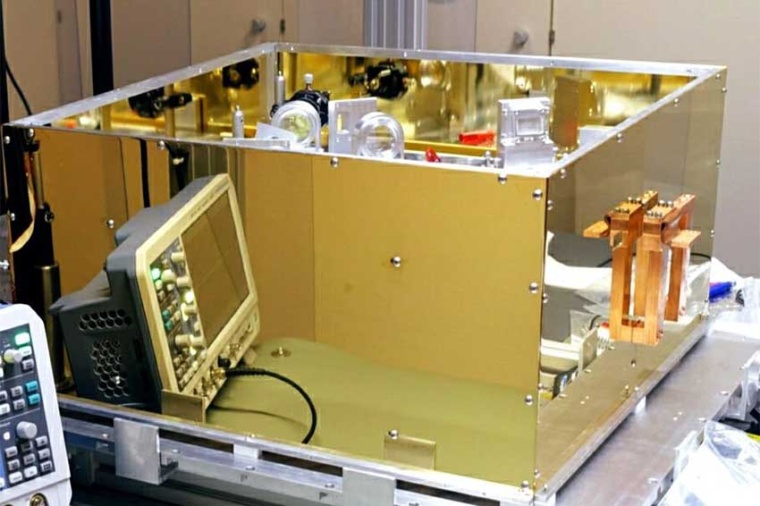Development of a spectrograph ‘on-a-chip’
EU funding of 3.4 million euros for the Pics4sens project
The joint project Pics4sens by the Leibniz Institutes AIP and IHP in cooperation with the InnoFspec transfer laboratory at the University of Potsdam won the competition in last year’s Staf call for proposals and will be funded over a period of four years with a total of 3.4 million euros, 2.2 million euros of which will go to the AIP.


The StaF-Verbund funding program to promote the strengthening of technological and application-oriented research in research networks of scientific institutions in the state of Brandenburg is financed by the European Regional Development Fund (ERDF). Pics4sens will help to increase the technological maturity and shorten the path to commercialisation of photonic integrated circuits in sensor technology.
These somewhat unwieldy terms can be summarized in a short sentence: the development of a spectrograph 'on-a-chip'. This picture gives an idea of what is involved: the realization of what are traditionally large and expensive high-performance optics in a tiny photonic chip. PICs have already established themselves in computer centers and Internet data communication. Another area of application is still in its infancy: spectroscopy and sensor technology.
The scientists in the AIP's Astrophotonics section, led by Dr Kalaga Madhav, have achieved a leading international position in this field and have developed and utilized various generations of PICs for applications in spectroscopy and interferometry. With a chip of the type shown in the picture, a spectrograph designed for the near-infrared range was built for the first time in the world with the support of AIP research technology: Paws, the Potsdam Arrayed Waveguide Spectrograph. Here, a highly sensitive image sensor is cooled to a temperature of –190 °C in order to electronically record the chip’s high-resolution spectrum.
The rather bulky design of the cooling housing for the infrared image sensor compared to the chip shows that miniaturisation has not yet been fully achieved. This is precisely where the Pics4sens project comes in: The Leibniz Institute for Innovative Microelectronics (IHP) has all the prerequisites and expertise to integrate the image sensor into the PIC, a marriage of photonics and electronics, so to speak.
Researchers hope that this will not only lead to a breakthrough for astrophysical instruments, particularly in space, but also to outstanding innovation potential and future market opportunities in areas such as agricultural technology, mobility, healthcare, food technology and chemistry – future topics that have been prioritized by the ‘innoBB2025 plus’ innovation strategy and the master plan for the optics and photonics cluster in Berlin and Brandenburg.
Project manager Martin Roth emphasized: “With the Leibniz Institute for Innovative Microelectronics (IHP) in Frankfurt (Oder) and the Leibniz Institute for Astrophysics Potsdam (AIP), the state of Brandenburg has two top performers in top international research, according to the latest evaluations by the Leibniz Association. In cooperation with the InnoFspec transfer laboratory at the University of Potsdam, the Pics4sens project has excellent prerequisites for further expanding and utilising our technological lead.”
Company
Cluster Optik und Photonik Berlin Brandenburgc/o Berlin Partner für Wirtschaft und Technologie GmbH
10623 Berlin
Germany
most read

ZVEI survey: Significant investments in industrial AI planned
A recent survey by the ZVEI shows that the manufacturing industry in Germany wants to invest significantly in industrial AI.

Otto wins IERA Award 2025
Rockwell's robot is an AMR solution that can transport heavy loads in factories and operate in robot fleets of over 100 units.

First access for external users to the QSolid quantum computer
The prototype of the QSolid quantum computer was successfully integrated into the JUNIQ infrastructure of the Jülich Supercomputing Center.

Successful conclusion of the IVSM Fall Meeting 2025 in Haikou, China
The 2025 Autumn International Vision Standards Meeting (IVSM) took place from November 3 to 7 in Haikou, Hainan, and attracted over 120 R&D engineers worldwide.

SEW-Eurodrive and TTTech Digital Solutions enter into partnership
The aim of the collaboration is to integrate SEW-Eurodrive's axis and drive systems into the Ubique automation platform.






